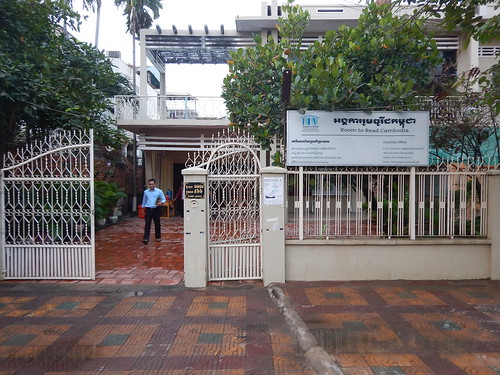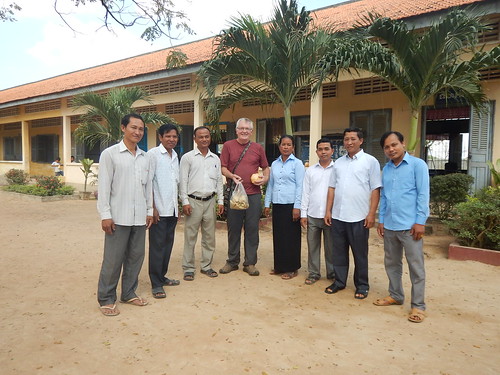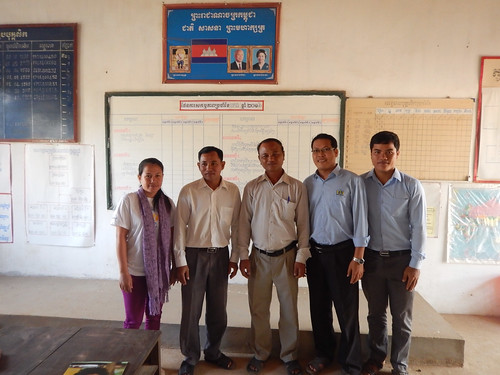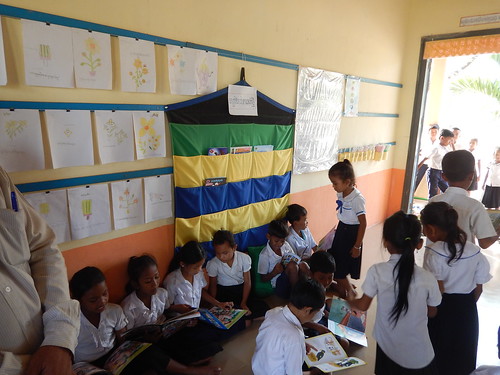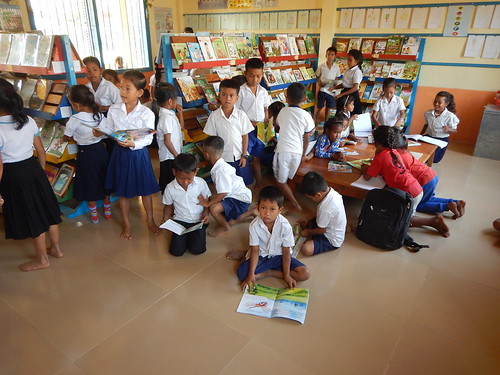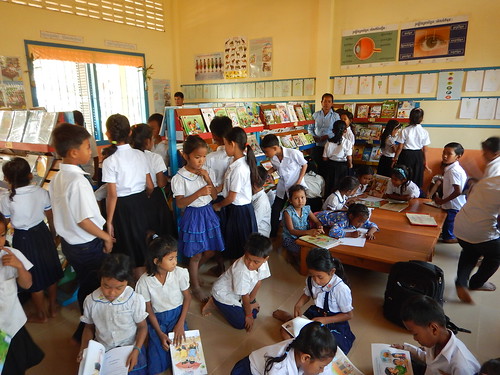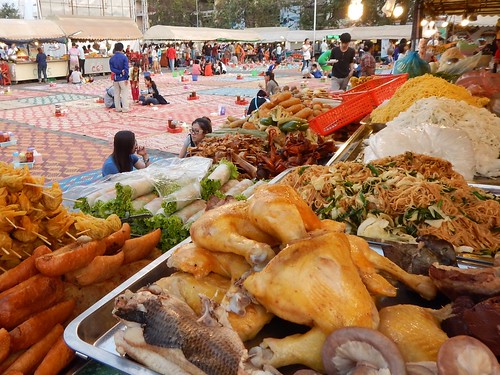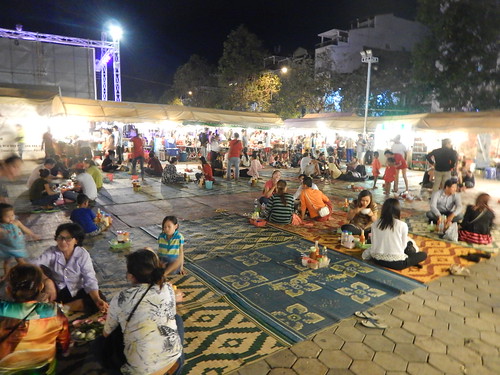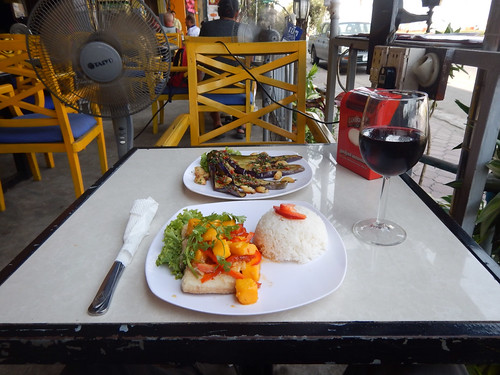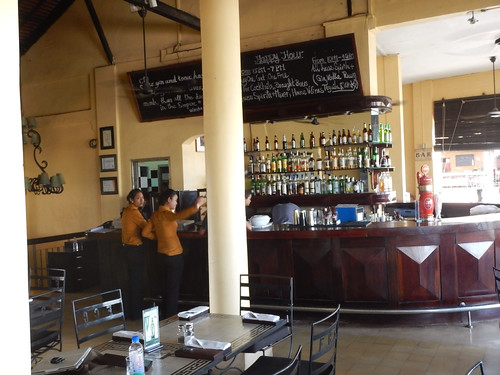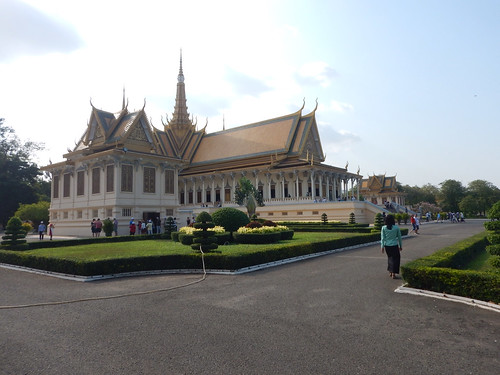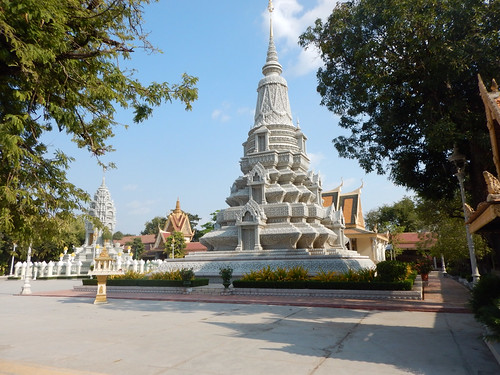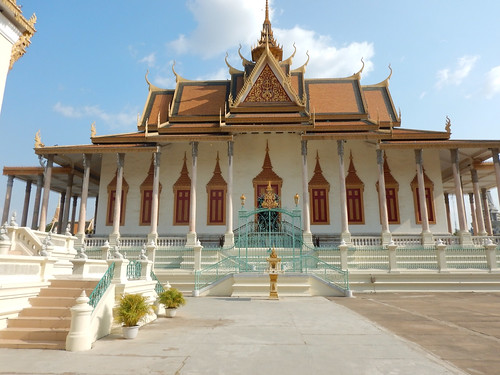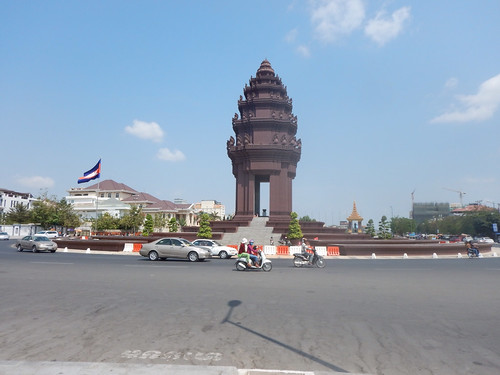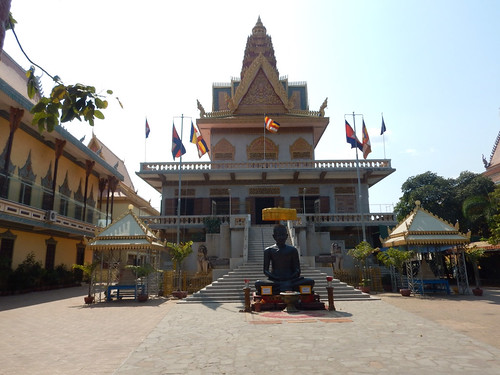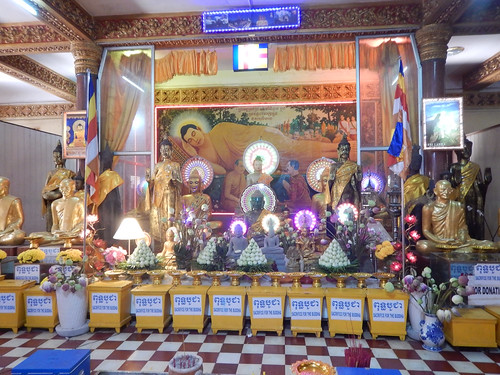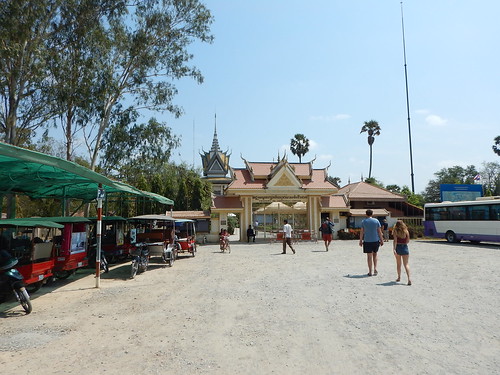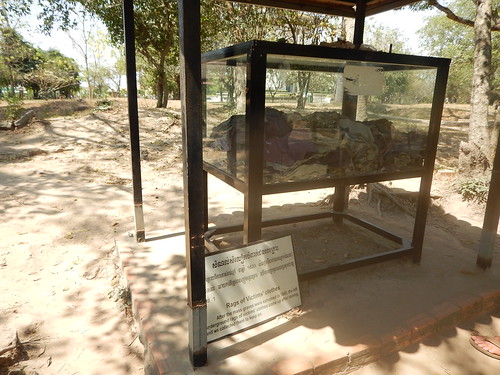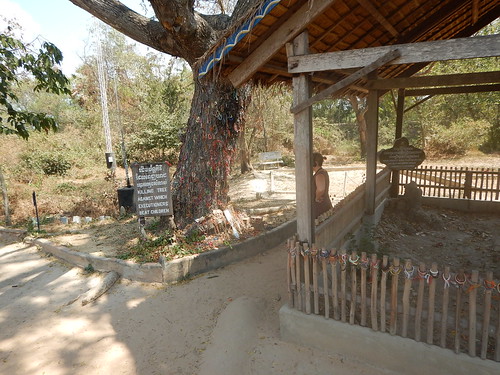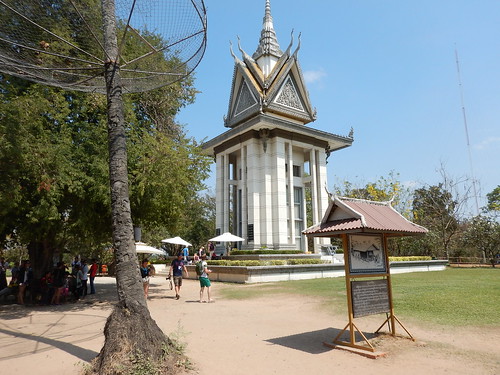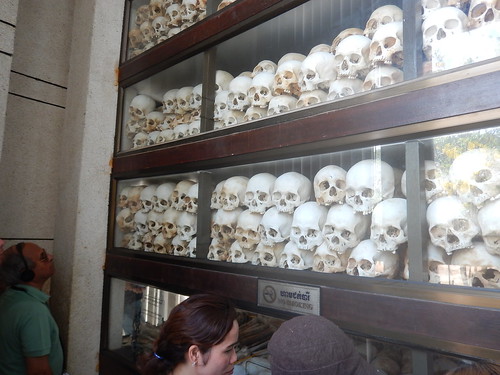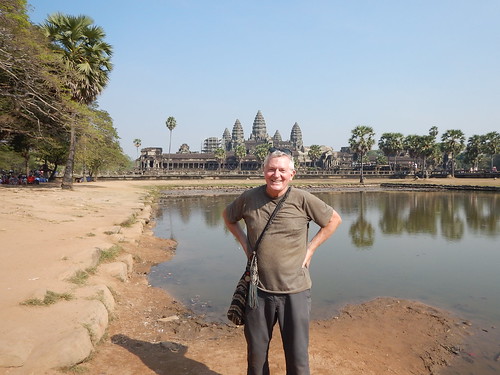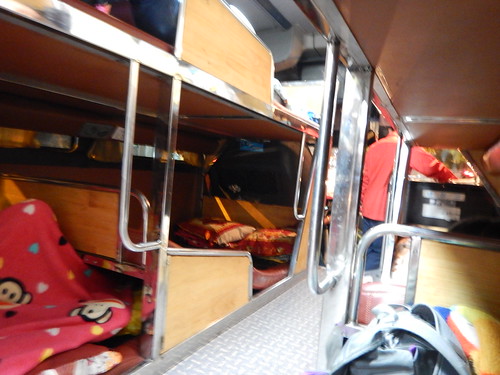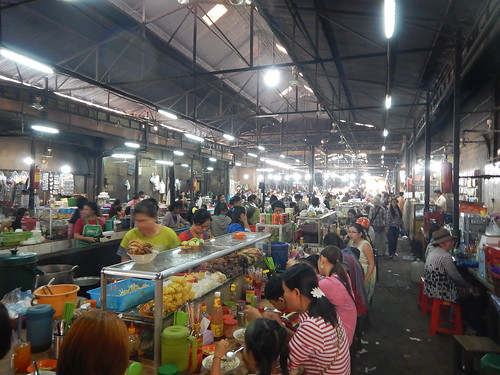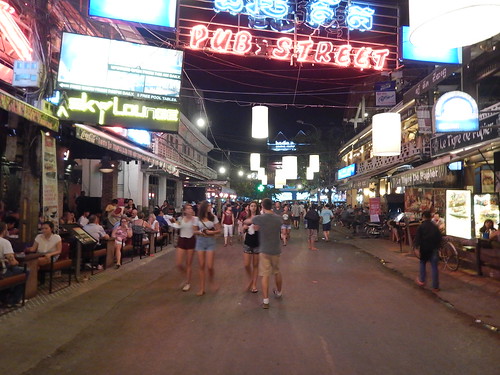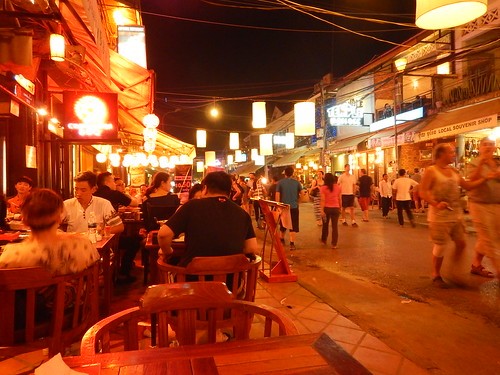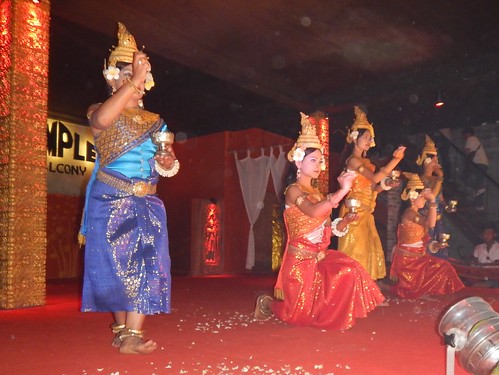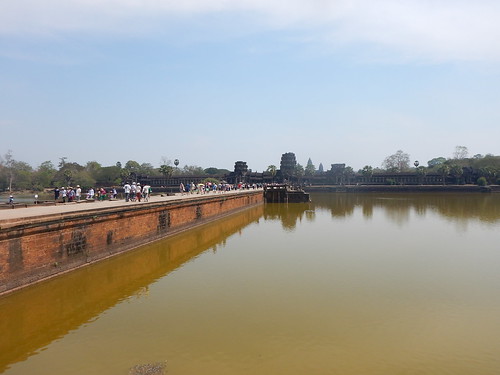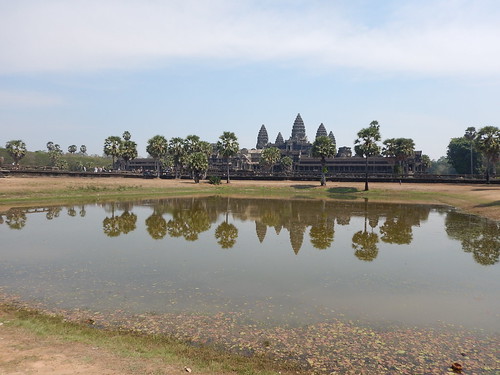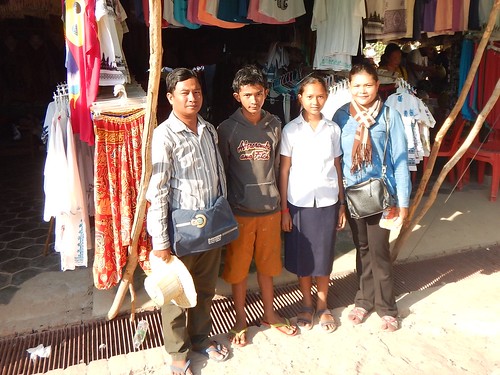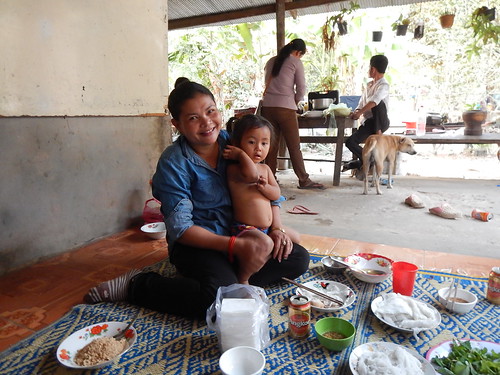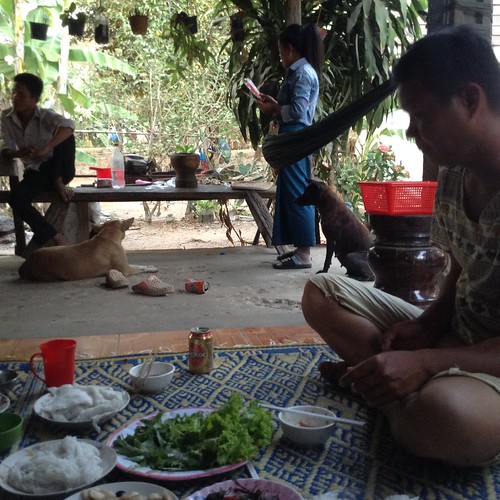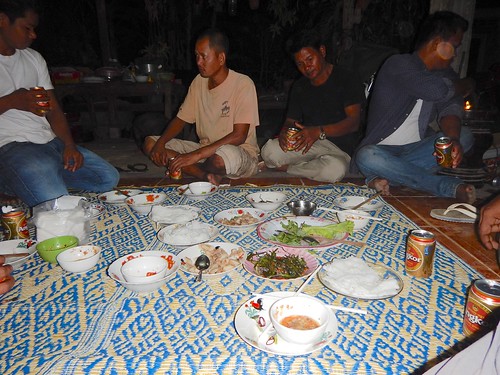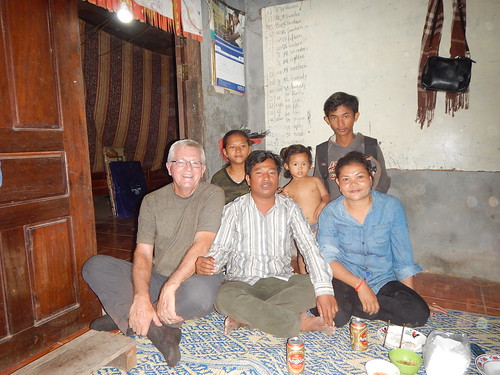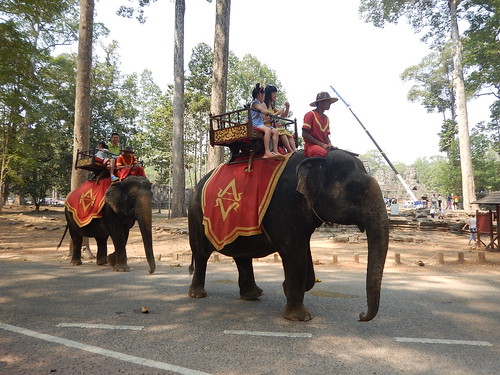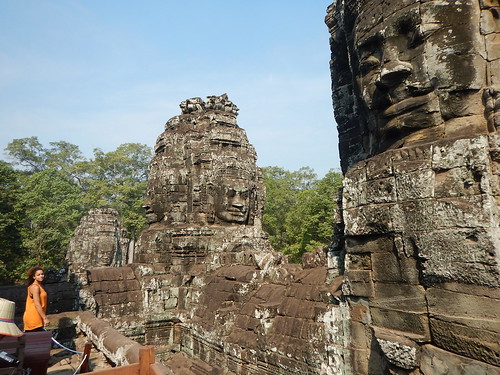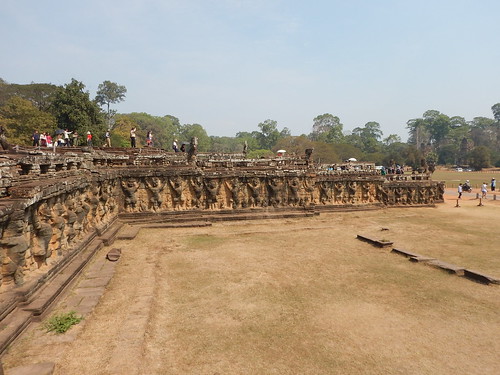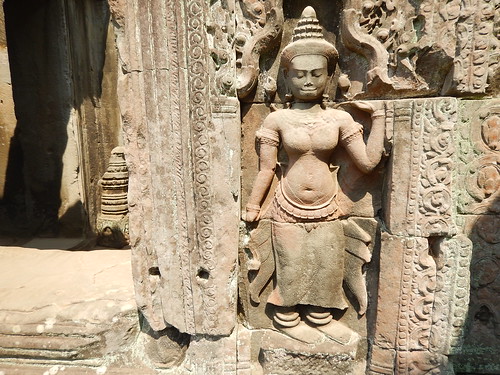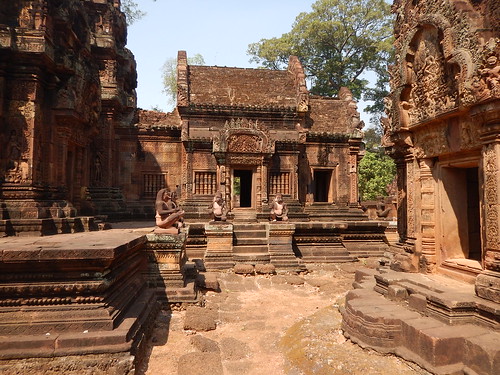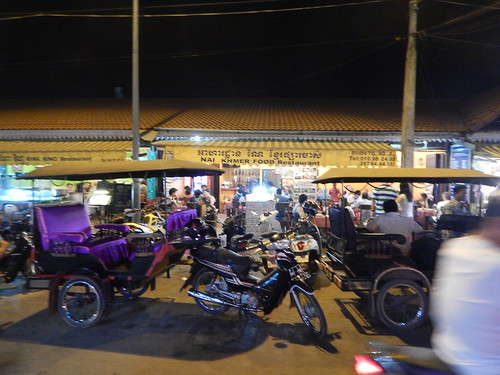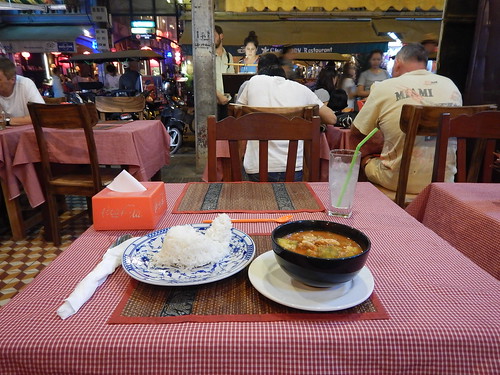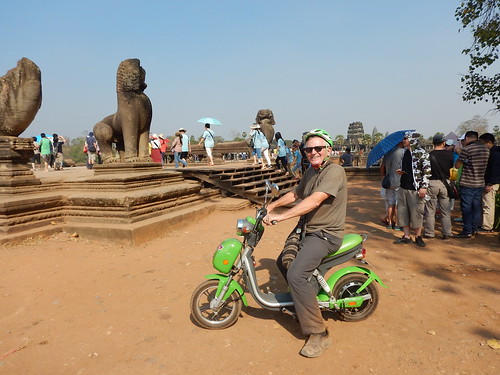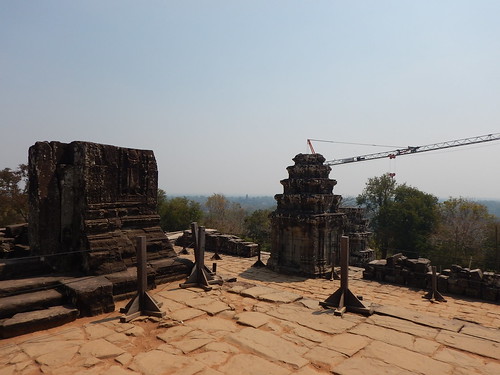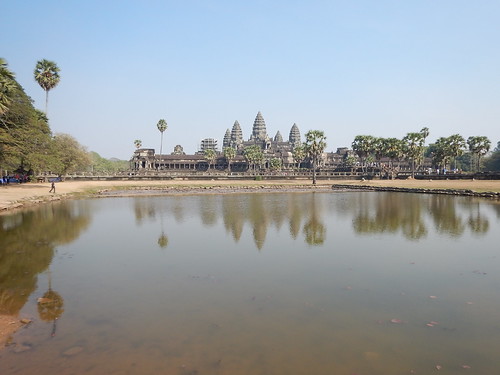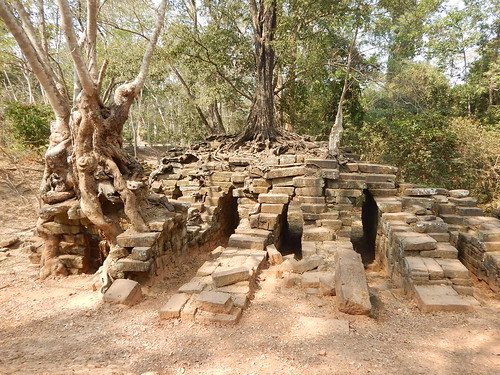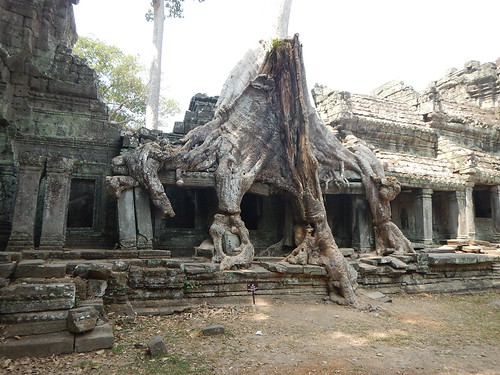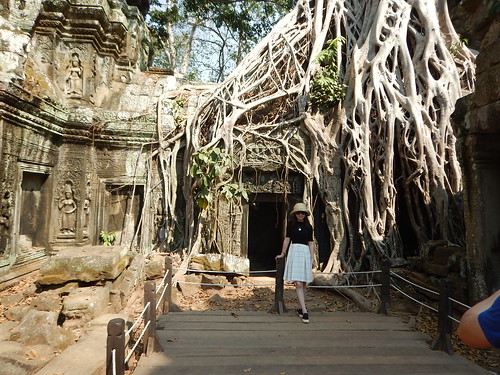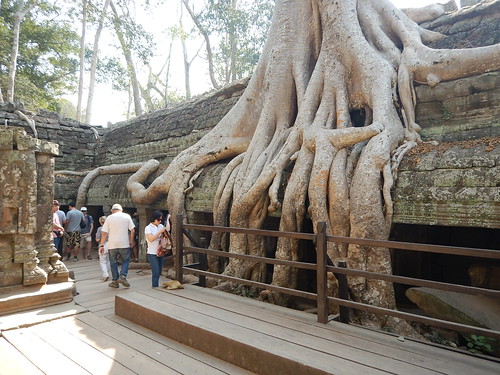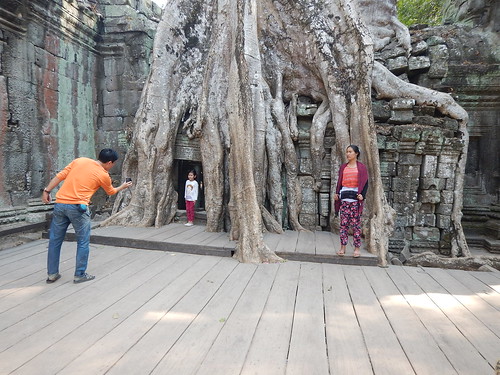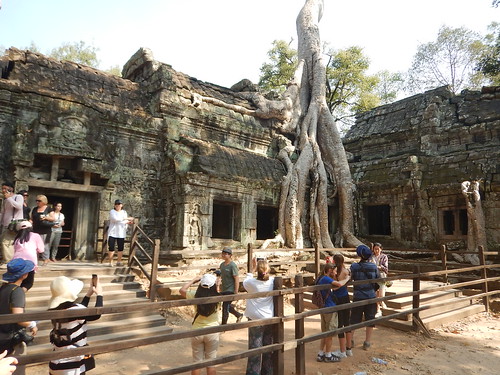This blog entry begins with happiness and hope for the future of Cambodia and ends with a remembrance of the sad and tortured history of Cambodia under the Khmer Rouge from 1975 to 1979.
Some of the students and staff gathered in front of part of the elementary school that has about 300 students---about half are girls.
My site visit to a Room to Read* sponsored elementary school in Prey Veng, Cambodia would be the highlight of my Cambodia Adventures. At 6am just as dawn was breaking, I got a moto-taxi ride to the Room to Read (R2R) Cambodia Headquarters. Unfortunately, my driver rode me to the south end of town before checking with another driver that he should have taken me north. I barely got there at my meeting time of 6:30am through the busy streets. At least the moto-taxi could get through the already congested traffic.
I was the only donor on this site visit some 80 km east of Phnom Penh as the driver and Sonty Tay, the Operations Manager for the Prey Veng R2R office headed to our tour in a nice car with A/C. The last few km were on narrow dirt roads to the school which was adjacent to the town's Buddhist monastery.
I thoroughly enjoyed my school visit to the Khsam Tboung Primary School near Prey Veng, Cambodia. Sonty Tay was my guide for this visit. When the school year started in November 2015, it marked the first time that the R2R tools and techniques were used at this school.
I am in front of the school with the teachers, the principal on my right, and the librarian on my left with my sticky rice gifts from the school.
From left to right: R2R mobilizer, teacher, principal, Sonty Tay--R2R Prey Veng Operations Manager, and teacher.
They have a well-stocked library chuck full of R2R illustrated Khmer children's books along with several other books including nutrition, construction, farming, and fishing books. It is staffed by a trained librarian who indicated that the general public is also allowed to use the library.
The yellow and green pocket files contain new books that can be read in the library, but not checked out for the first month. The pictures on the walls are the book reports and drawings that the students do after reading the books.
I have attached pictures of this library that was filled with kids during their recess period. Children also check these books out and say that they read these books to their family members. We asked how many books they had read since the school opened in November, and one girl indicated that she had read over 100 books.
I sat in on a 1st-grade class where they were applying the R2R developed methodology using a teacher guide and student workbook. Lots of different learning modes seeing, saying, writing---on the individual blackboard and their homework notebook, repeating and using it in sentences. R2R developed and trained these teachers in cooperation with the Ministry of Education. I learned one Khmer syllable in the course of the class.
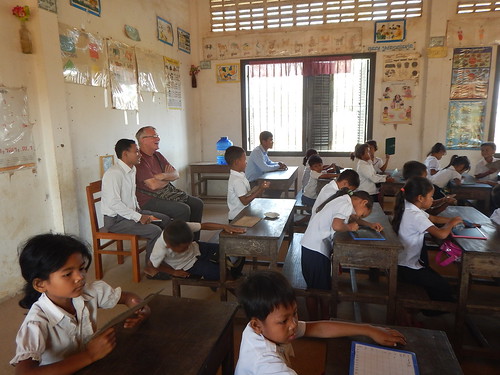
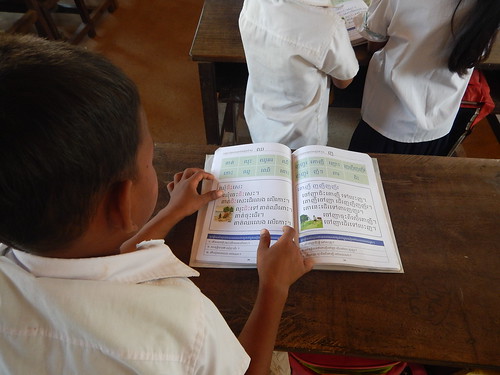
The sixth-grade class came into the library where their teacher read a story and when finished, asked a number of questions to determine their level of comprehension.
After that Sonty, told this class that I was a Room to Read volunteer/donor and he told them to ask me questions to find out who I was, where I was from along with any other questions they had of me. A couple of their questions were in English such as my name, where was I from, and how old I was, and the rest were translated for me.
I also got to ask them questions like how many books have they read since November by show of hands at 5, 10, 20....to 100. I asked them what they wanted to do when they grew up and why. Teacher, Doctor, Engineer, but no farmers were identified. The teacher was the most popular with one girl explaining that she wanted to be a teacher so she could improve her family's situation, help her community and country.
They shared some coconut juice and sticky rice treats artfully packaged as boxes and birds that the principal has handed to me.
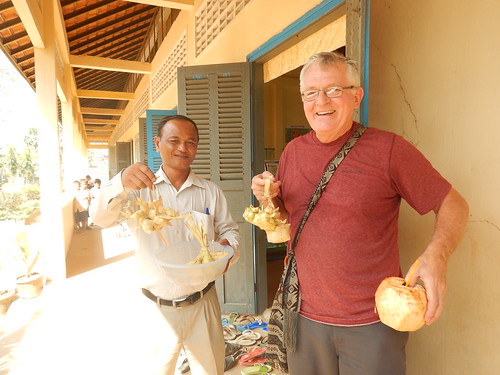
While in Phnom Penh, the Capitol of Cambodia, I also took in some of the sights of the city.
The night market food court.
Here is the confluence of the Tonle Sap and Mekong Rivers.
Mango and fish with baked eggplant at a riverside cafe.
I stayed at a riverside hotel near the confluence of Tonle Sap and Mekong Rivers. Nearby, I had a drink at the Foreign Correspondents Club where many journalists gathered during the Vietnam War to swap stories, relax and send out their reports.
The Royal Palace grounds were beautiful and featured a Silver Pagoda that had 5,000 large tiles of silver laid on the floor that weighed 1 kg each and also where the Emerald Buddha resided. No pictures were allowed inside, but here are some exterior photos.
Silver Pagoda on the Royal Palace Grounds.
Here is the Independence Monument patterned after an Angkor Wat tower that designated the time when Cambodia became independent from the French in 1953.
Nearby is the Wat Ounalom which is the headquarters of Cambodian Buddhism.
In my last visit 10 years ago, I went to the Tuol Sleng Museum----Security Prison 21, a former high school-- where they first interrogated, tortured, and kept people until they convicted them of crimes against the Khmer Rouge. It was filled with pictures of the tortured and torturers along with cages and torture instruments. When the Vietnamese army liberated Phnom Penh in early 1979, there were only 7 prisoners alive. I was not up to returning to this sad place, but I felt the need to visit the killing fields of Choeung Ek to complete my glimpse of what happened in Cambodia when the Khmer Rouge tore the country and its people apart between 1975 and 1979.
My tuk-tuk ride to the Killing Fields of Choeung Ek.
Entrance
From the S-21 prison in Phnom Penh, they then put prisoners, including their families, in trucks and sent them out to the killing fields. They usually arrived at night. After they were stripped of their clothes, many of the women were raped as well as further tortured along with the men. At first only there were 10 or so per night, but near the end, there were up to 300 per night. Sometimes they did not have enough time to kill all of them so they continued into the morning hours. To save bullets many of the victims were killed with machetes, heavy iron bars, or farm tools.
Ragged clothes were found while excavating these killing fields.
The babies and small children were grabbed by the feet and tossed against this tree where their skulls were smashed.
They estimate that most of the 17,000 detainees at S-21 were transported to these killing fields and killed. This memorial stupa displays more than 8,000 skulls, bones, and ragged clothes. For the tour, they have audio headsets that described some of what happened here in many different languages. It was a very sad day for me, but it was important for me to witness this terrible part of our history.
*In 1998, John Wood, a former Microsoft executive, created Books for Nepal which was changed to Room to Read in 2000 to broaden its scope to globally focus on "World Change Starts with Educated Children". It envisions "a world in which all children can pursue a quality education that enables them to reach their full potential and contribute to their communities and the world." The R2R Cambodia Office was established in 2002. For more information on Room to Read go to their website: www.roomtoread.org.
My Travel Adventure DVDs Available
If you want to buy one of my 29 travel videos, I sell them on eBay for $5 with free shipping worldwide whenever I am not traveling. My seller’s name on eBay is —huntforvideos.
Here is a link to my eBay site:

